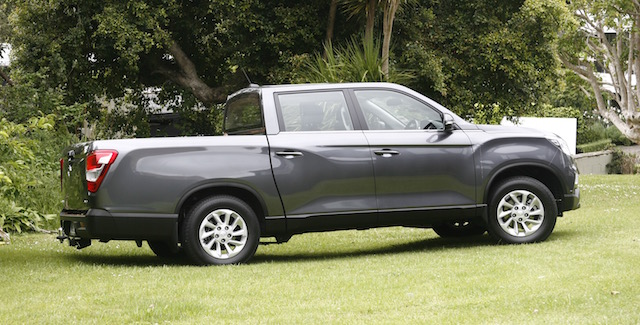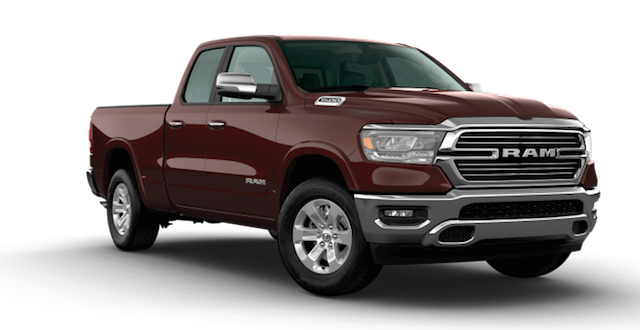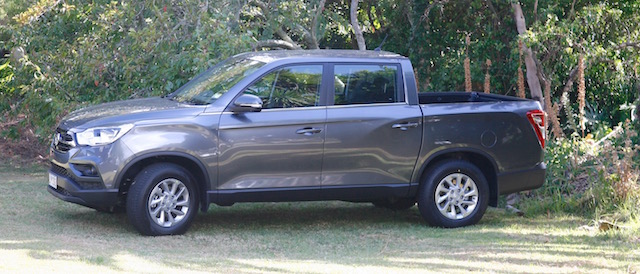
A builder in Auckland has run into the same problem owners of diesel vehicles, especially utes, have: exhaust filters so clogged with soot that they can send the vehicle into limp-home mode.
So he got out of his 3.0-litre diesel Volkswagen V6 Amarok and into an all-American Ram 1500 – and promptly installed a dual-fuel system to enable the Ram’s 5.7-litre Hemi V8 engine to run on petrol or LPG.
The LPG costs $1.20 a litre or thereabouts – once he gets to the few LPG filling stations in the city, an inconvenience. But he’s done the maths and says his weekly LPG fuel bill is 60 per cent of what it would be if the Ram was petrol only.
Most of his working day involved – before the coronavirus lockdown – short, stop-start trips between building sites and suppliers.
That’s just what diesel engines don’t like. And that’s what the builder didn’t like about his V6 diesel. “I didn’t need the hassle of the diesel filter clogging up.”
Nor did a secondary school teacher in Auckland. He traded in the family’s 2.0-litre petrol station wagon on a four-wheel-drive, double-cab Ford Ranger ute with a 3.2-litre diesel engine.
Why? I said. What use do you have for a truck over a station wagon? Said he: “I can chuck the kids’ footy gear and bikes and stuff in the tray – makes it easier than putting it in the car. And we can go places in a ute we mightn’t be able to get to in a car.”
It was the same cockamamie reason suburban dads in white collar jobs (Walter Mitty comes to mind here) have for choosing a truck – a solution in search of a problem.
That was last year. Daily stop-start trips in traffic to school during the week and to kids’ sports on the weekend brought the Ranger’s diesel filter undone.
His garage did a ‘forced generation’ to clean it. Mechanics will tell you that happens around the back of the garage. It’s also called a ‘controlled burn-off’, often an evil smelling process.
Without putting too fine a point on it, diesel engines are at their most efficient over long distances. At low-speed, short trips here and there, a diesel engine and its ancillary systems never reach the operating temperatures at which the exhaust filters work best.
These are called diesel particulate filters (DPF). They became mandatory under 2009 Euro 5 emission standards.
DPFs capture and store soot from exhaust gases in order to burn it off to reduce harmful emissions. The burn-off process is called a regeneration cycle. It essentially cleans the DPF.
The filters are designed to be maintenance-free, but constant stop-start motoring can gum them up. Among the resulting problems:
- A strong smell of diesel
- Engine goes into limp mode
- Stop-start ignition system no longer works
- A cloud bank of smoke from exhaust
A diesel engine with a DPF needs to be run for about 15 minutes at around 2500-3000rpm for the regeneration cycle to kick in and reduce the collected soot to benign ash.
The ute market offers few petrol choices. The best of them is long gone: the 4×4 Toyota Hilux 4.0-litre V6, good for 175kW/376Nm. Toyota dropped it some years ago. Lack of demand, it said. It was priced at around $70,000. I know of contractors still grumpy that it’s no longer available.
The only one-tonne, double-cab petrol ute on the market delivering similar power and torque to the V6 Hilux is the 2.0-litre Ssangyong Rhino. Its turbocharged four-cylinder engine develops 166kW/350Nm and comes with the choice of six-speed gearboxes, auto or manual.
The petrol Rhino is rear-drive only, with a braked towing capacity of 2800kg. There are two variants, one (above) with a 1300mm bed (the shortest but deepest in the ute segment and priced at $25,990 plus GST) and the other, the XL (at top), with a 1600mm bed (the longest and deepest in the segment and priced at $29,990 plus GST).
The 1300 bed rides on rear coil springs, the 1600 on leaf springs for a 200kg heavier payload (860kg-1060kg). Inside, everything is the same, a smart cabin layout shared with the Rexton SUV and with a fit and finish that belies the price.
The 2WD petrol Rhino’s appeal centres around its power delivery and well sorted ride and handling, the 1300 and its rear coil arrangement an advantage here.
Another big plus is the on-road quietness, the flexible engine responding almost inaudibly to throttle inputs, certainly compared with the echo chamber-like sound effect of a diesel.
What’s missing? For the price, not much. A reversing camera – pretty much standard fare these days – is an obvious short-coming. But, in short, you get a lot more than you pay for. Also, anecdotal evidence points to few 4WD utes spending much time at all in 4WD.


